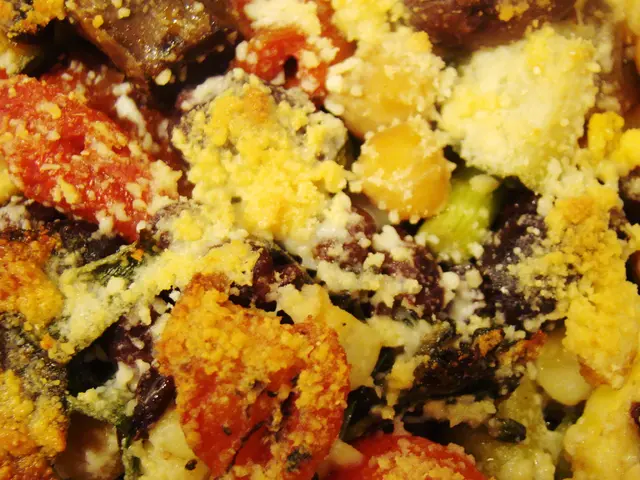Guide on Preparing Homemade Milk Kefir
Jump to Homemade Milk Kefir Recipe Print Recipe
Determined to brew your own milk kefir? This guide breaks it down for you with all the tips and tricks. Ready to reap the numerous benefits of this tangy, probiotic-rich elixir? Let's dive in!
Here's a quick peek at what you'll find:
- What on Earth is Milk Kefir?
- Why craft your own milk kefir at home?
- The Milk Kefir Recipe
- Savoring Your Creamy Creation
- Grain Storage
- FAQ
- Tools to Empower Your Milk Kefir Journey!
What is Milk Kefir?
Delve into the world of milk kefir – a creamy, sour, slightly bubbly beverage, crafted from any animal milk. It hails from the Caucasus Mountains and has a longstanding reputation for promoting good health and longevity. Think of it as yogurt's glorified cousin with different microorganisms and more probiotics!
Curious about those curiously-shaped, gelatinous wonders? Milk kefir grains – small, white blobs resembling cauliflower – teem with a plethora of bacteria and yeast in search of milk to ferment.
Why Brew Your Own Milk Kefir?
From local to global, homemade milk kefir offers numerous advantages:
- Flavor Mastery: Adjust fermentation time and milk selection to personalize acidity, taste, and texture.
- Swift and Easy: Minimal equipment and ingredients get things started within minutes, allowing nature to take its course.
- Safety First: By adhering to basic preparation and storage rules, the process is relatively risk-free.
- Probiotic Bonanza: Rich in probiotics for bolstering the immune system, improving digestion, and restoring intestinal flora balance.
Brewing Homemade Milk Kefir: The Recipe
Armed with a jar, breathable cloth, sieve, and love for crafting, you'll be domestically fermenting this tasty beverage in no time!
Ingredients:
- 2 tablespoons milk kefir grains
- 1 liter milk (prefer goat, cow, or sheep)
Steps:
- Gather your kefir grains, milk, container (glass jar), strainer, and covering (cloth or coffee filter).
- Mix grains and milk well.
- Cover jar, then ferment at ambient temperature for 12 to 24 hours.
- Strain out grains, reserving them for future use.
- Refrigerate to slow fermentation; store for 2-3 weeks.
Enjoying Your Homemade Milk Kefir
Go ahead and indulge in your homemade elixir! You can drink it just as it is, or add a hint of honey or fruit for extra delight. Explore savory options like dips, sauces, or fresh cheese, or try baking into soda bread! Have fun experimenting!
Kefir Variety Grid: Homemade vs Store-Bought
Compared to store-bought milk kefir, homemade milk kefir presents the following advantages:
- Flavor Flexibility: Tailor taste and texture to preferences.
- Superior Probiotic Count: Enjoy a greater diversity and quantity of living cultures.
- Quality Control: Guarantee the quality of ingredients with no additives.
- Sustainable Choices: Save money and cut down on packaging waste.
- Fermentation Fellowship: Join a network of fermentation enthusiasts and lovers.
Remember, despite these advantages, there may be drawbacks related to time, effort, consistency, prerequisite knowledge, and locating good quality grains. Dialing up the taste may require a stronger or longer fermentation than standard commercial products.
The Health and Nutritional Superpowers of Milk Kefir
- Packed with nutrients: Contains essential vitamins, minerals, and amino acids that support health.
- Rich in probiotics: Contains a wide range of beneficial bacteria and yeast.
- Digestive Aid: Aids in digestion and eases lactose intolerance by breaking down lactose during fermentation.
- Anti-inflammatory Properties: May reduce inflammation and boost the immune system.
- Skin and Oral Health: Supports skin health and oral hygiene due to probiotics' protective effects on skin and gut.
Arming Your Kitchen for Milk Kefir Production
Luckily, you likely already have most needed equipment at home:
- Jar: Choose a wide-mouthed glass jar for ease of use.
- Strainer: A stainless steel or plastic strainer helps in separating the liquid and grains.
- Cloth/Coffee Filter: Use breathable cloth or coffee filter to cover the jar.
Fancy taking your fermentation game to the next level? Invest in the all-in-one Kefirko kit: jar, sieve, large mixing spoon, and adjustable lid for seamless production. Don't forget to wash your equipment thoroughly before use!
Frequently Asked Questions
Q: My milk kefir is dividing! What do I do?
A: If fermentation proceeds too long, milk kefir may split into two. Give it a stir or blend, and you're good to go!
Q: My grains won't multiply.
A: Be patient! Grains typically start multiplying after a few weeks of regular fermentations. Frequent pauses in fermentation can affect the grain's health.
Q: Is my milk kefir contaminated?
A: Contamination is rare due to an abundance of beneficial bacteria and yeast. Always use clean utensils, wash hands, maintain moderate temperature, and keep jars clean.
Q: Why does my milk kefir feel slimy/sticky?
A: A slimy texture may indicate stress resulting from temperature changes, frequent refrigeration pauses, or inconsistent fermentation intervals. Rinse the grains, and adjust your process for optimal results.
Q: Does milk kefir contain lactose?
A: While milk kefir does contain some lactose, the fermentation process breaks down a significant amount, making it more tolerable for those with lactose intolerance.
Q: Can I use plant-based milk for kefir?
A: Technically possible, but not recommended due to kefir grains' preference for animal milk. The results may be inconsistent or disappointing.
Q: How do I recover my kefir grains after fermentation?
A: After filtration, the grains should be rinsed and recovered for successive fermentations.
Sources:
- Nutrition Stripped: The Complete Guide to Culturing Milk Kefir
- Dairy.Wisc.edu: Milk Kefir
- Food Renegade: DIY Milk Kefir: A Practical Guide
- Cultures for Health: Making Milk Kefir
- SCD Lifestyle: How to Make Milk Kefir at Home
- DIY Nutrition: Using a Starter Culture Instead of Plain Milk Kefir Grains
- Incorporate the benefits of homemade milk kefir into your health-and-wellness routine byincluding it in your lifestyle. Food-and-drink options using milk kefir, such as yogurt bowls, smoothies, and baking recipes, can boost your nutrition and provide variety in your diet.
- Fitness-and-exercise can be further complemented by incorporating milk kefir into your post-workout recovery routine, supporting muscle growth and aiding in rehydration due to its hydrating properties and high protein content.
- Adopting a lifestyle centered around cooking gives you the opportunity to make a variety of delicious probiotic-rich dishes using milk kefir, whilst embracing the science behind food and drink, ultimately promoting overall health and wellbeing.








